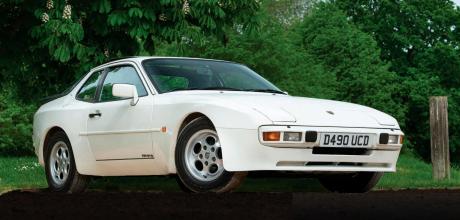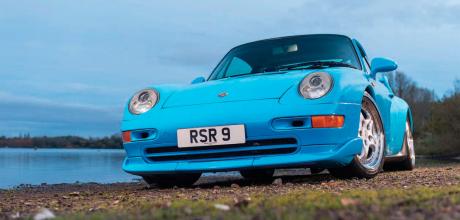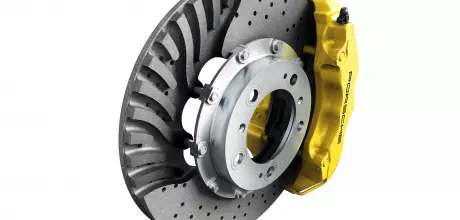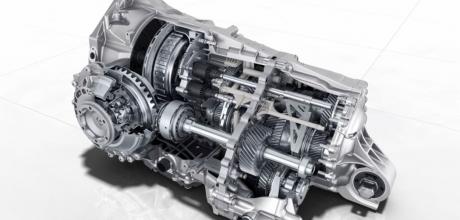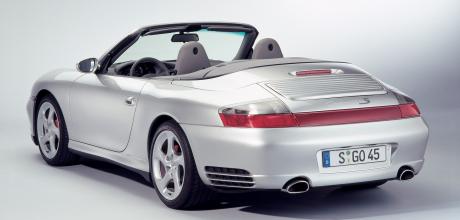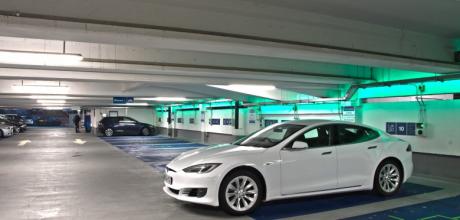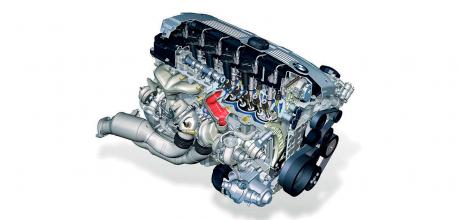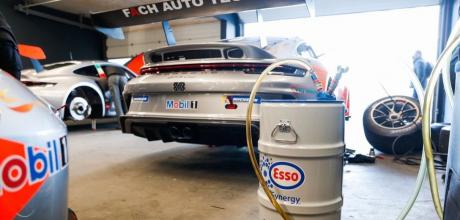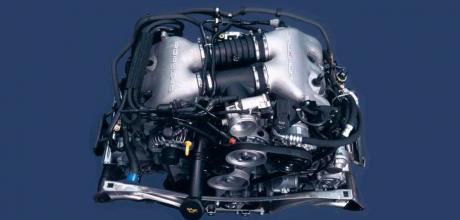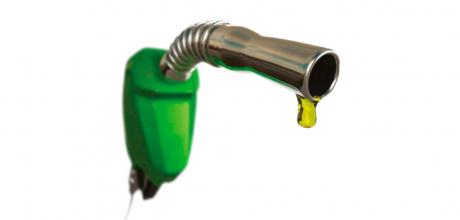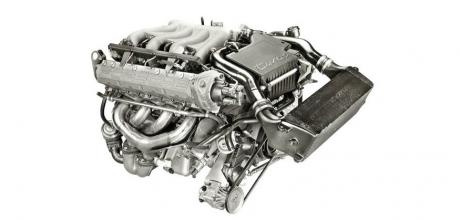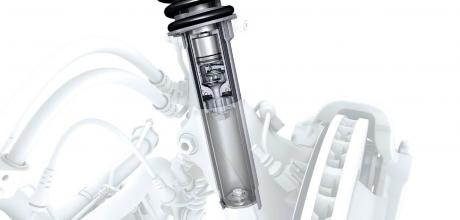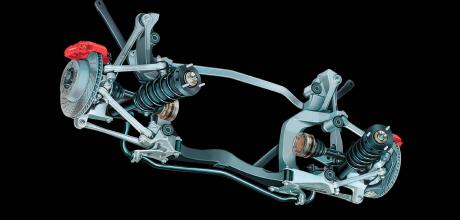The 944 was the best-selling Porsche of all time prior to the arrival of the Boxster 986 and Cayenne SUV, meaning there are plenty of examples out there to choose from... Words Dan Furr, Richard Gooding, Martin Morgan Jones Photography Adrian Brannan What to look for when on the hunt Launched in 1969, the 914 proved Porsche didn’t need to survive on a diet of rear-engined metal alone. By 1975, however, the two-seater’s time was up. That same year, the similarly radical 924 was launched.
Porsche’s patented VarioRam system is an ingenious way to alter geometry of the induction manifold according to engine needs under different operating conditions. Here’s how it works… Words Shane O’Donoghue Photography Adrian Brannan NOW WE’RE TORQUINGVarioRam is the name Porsche gave to its advanced variable intake system when the technology was first released in 1994.
Porsche 911 996 → How and why are Porsche Carbon Ceramic Brakes fitted to high-performance 911s so effective?
Unveiled at the 1999 IAA show in Frankfurt, Porsche Carbon Ceramic Brakes – PCCBs for short – first appeared on the 996 model GT2 of 2001. This was the first production sports car to use the technology. Disc brakes may have been patented in 1902, but it took until the middle of that century for production cars to perfect the technology, including Porsche’s development of the ventilated disc brake, first used on the 906-8 Bergspider of 1965 and utilised on the 911S the following year.
Porsche Doppelkupplungsgetriebe has outsold them manual gearbox in 911s for the past 10 years… The use of automatic gearboxes in cars predates Porsche by almost 50 years – an unkind person might say that many automatic gearboxes drove like they did. Not so with Porsche’s Doppelkupplingsgetriebe, or PDK for short.
Porsche 911 996 → Discover how Porsche Side Impact Protection was developed, and how it keeps you safe
Safety has always been a concern at Porsche, and throughout the 911 development various ideas have been introduced to keep occupants safe while maximising driver enjoyment. The three-part safety steering system and Targa roll bar are both examples of Porsche’s safety-derived developments, but legislation also has played a part, like the impact bumper. Technology explainedMore recently as crash protection laws developed, so did requirements for passenger safety.
I'm going on holiday for 6 weeks to visit family in Australia, what precautions do I need to take with my EV so that it still works when I get back to the airport? CURRENT AFFAIRSSo, you’re leaving the country for more than a month, and you’ve recently switched to an all-electric car. How should you leave your electric vehicle to ensure it’s safe while you are away, and it’s ready to drive when you get back?
Synthetic fuels are nothing particularly new, and we're familiar with GTL (Gas to Liquid) fuels that are made from natural gas. The Fischer-Tropsch process that's used for this can employ all kinds of hydrocarbon raw materials, to create designer fuels like kerosene, petrol and diesel, all of them significantly purer and lower in emissions than equivalent fuels derived from crude oil. It can also be used to synthesise the base materials for advanced synthetic lubricating oils.
This month we examine the issues surrounding Piezo Injectors on BMW's N43, N53 and N54 engines. Words & Photography: Andrew Everett Ahot topic at the moment is that of the infamous Siemens VDO Piezo injectors fitted to direct injection BMW engines (and others) since late 2007 – these will be the four-cylinder N43 1.6 and 2.0 engines, the six-cylinder N53 and the N54 twin turbo six that arrived in late-2006 as the first proper direct injection BMW engines.
You’ve likely heard about Porsche’s investment in eFuels – here’s how the company expects it to work After more than a century, the internal combustion engine is on a countdown timer, and so are fossil fuels. Electrification is touted at the future for vehicles, but where does that leave your beloved flat six? Fear not, for Porsche is fighting your cause, and investing heavily in a practical solution that means your 911 can be used well into the future. The solution is eFuel, or synthetic fuel.
Alisdair Cusick explains how the X51 Powerkit extracted more from the 911’s nat-asp flat six For some owners, standard is never enough – even on a 911. With this in mind, Porsche offered a performance increase package for the 911 called the X51 Powerkit. Since the 993, the X51 was a factory-approved package to give a 911 engine a little bit extra. The X51 floated around on options lists for both the 993 and 996, but you may not have known this, so uncommonly was the option specified.
The world has changed in the past month or so. The war in Ukraine has sent shocks around the world, both emotionally and financially. Aside from the horrors inflicted on Ukrainian people, the world is learning to cope with new supply chains for all manner of goods, including Porsche. Earlier last month production temporarily halted due to Ukrainian wiring harness supply being affected. The fallout filters down to us all, as consumers, notably with record petrol prices in recent weeks.
Though more purebred Porsche than its predecessor, the 944’s normally aspirated inline-four owes much to the existence of the 924… Words Shane O’Donoghue. Photography Porsche. As the prices of all classic Porsches inexorably rise, models previously snubbed by self-appointed connoisseurs are coming of age. As a case in point, the 924 has historically been regarded as the runt of the litter, despite its considerable commercial success.
With an engineering background and previous career in Formula One, performance driver coach Neil Furber reveals his blend of driving tips and vehicle technology explanations to help you get more from your rear-engined machine. Somewhat of a Stuttgart stalwart since the 997, PASM has long been a hot topic among customers who are new to the world of Porsche. Referring to its full name hints at what secrets lie within the acronym: Porsche Active Suspension Management.
It’s been well known for its issues around reliability, but 25 years on, what’s the real-world assessment of the 996’s mechanical underpinnings? Porsche built over 175,000 996s, and if you believed everything you heard about it, every single one is problematic. The 996 has issues, but they’re hugely blown out of proportion. The effect is exacerbated by both the information revolution and the increased production proliferation.
The 993’s multi-link rear suspension brought more than just improved comfort, says Alisdair Cusick In addition to marking the end of the air-cooled era, the 993 introduced one standout development: its multilink rear axle suspension. For the first time, the rear axle of a 911 was capable of steering inputs. The origins of the technology date back to 1977 with the 928. Until then, rear suspension was commonly a semi-trailing arm setup, whereby two arms connect to the body with two rubber bushes.


